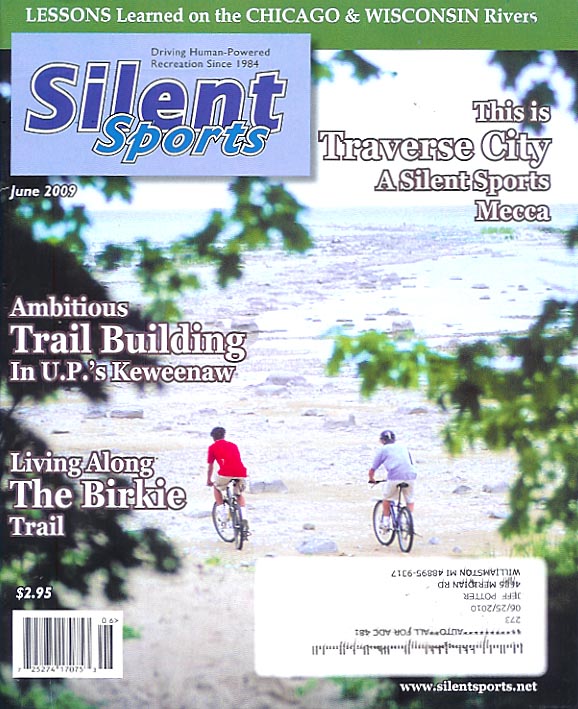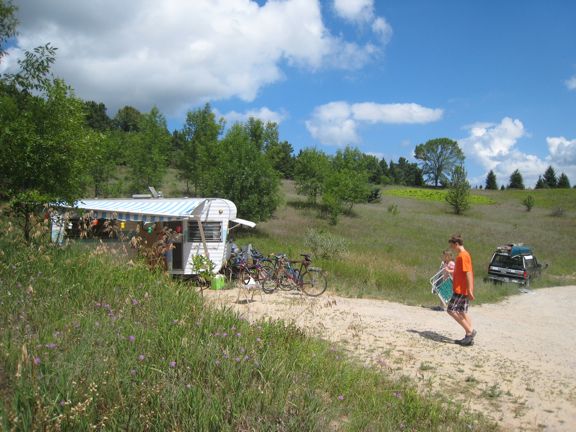We’ve had over a foot of snow on the ground for a couple weeks now. The day before we were forecast to get a 50deg day, I got the notion to do a series of short YouTube vids showing the difference between the major types of snowshoes.
In recent ski forays onto local trails we’ve been seeing dozens of folks using modern snowshoes. They’re dandy for packed or soft trails but I couldn’t help thinking about the true glory of shoeing: diving off into otherwise-inaccessible deep snowy areas for some easy floating around. It’s like walking on water when it goes right. But my experience with modern shoes was that they didn’t float. I wanted to doublecheck that. We hadn’t seen traditional wood shoes being used, at all. Yet woodies always seemed to me to be the very best way to go. Again, I wanted to see if that was so.
I went to our local park and borrowed a pair of their biggest modern shoes, meant for 250-pounders, and tried them out. Darn, they sank in deep. Then, on a packed trail their crampons felt weirdly high and rigid, with my foot riding on the pivot bar an inch above the trail—that would get old. In tight terrain or soft trails, though, they would be dandy. And, of course, they’re good for the sport/race side of things. I took a quick vid showing how they worked, using my digicam and a gorilla pod wrapped to a tree.
Here’s the clip:
Then I strapped on my old Michigan-shape woodies and tried those. Yep, they float like a dream. Light and effortless over the deep snow. They sank in half as much as the Tubbs. Using them requires a bit of a knack, as you lift one shoe over the other and past it. But their long tails help a lot with tracking. If you really wanted more float, the Alaskan or Ojibwa shapes are longer yet, and narrower for covering the distance.
I also have a pair of groovy old Trak Bushwackers. They’re short, wide snowshoe-like skis. They sink a little more than modern shoes but they glide on any trail or slope. More manueverable than a fullsize ski. I believe that several new models like them are now being made.
So, if you want more float than a regular ski will give, or if you’re in brushier terrain than a ski will manuever in, those are short vids showing the 3 main other options.
I did a quick search for other YouTube vids promoting modern shoes and, interestingly, a main series I found highlighted the tech features of a slew of shoe brands, with each vid ending with a split-second of the reviewer marching away…but never showing the result…floundering? trudging? I also noted that the reviewer, loaded with a pack, RAN off each screen.
I hope I’m not being too hard on the modern shoes. I just find it odd that woodies have basically dropped off the face of the market when they’re probably the best solution. I can only imagine that it’s because there’s no corporate push behind them. Maybe they’re also becoming too pricey. I’m sure that modern shoes quickly climb the price-charts but they’re probably also available for, say, $150, is my guess. It looks like new woodies are more like $200, due to the (non-Chinese) handwork. And the few remaining woody makers are small indie firms that typically aren’t into growth via marketing. So there’s all that. I suppose that if there was a need that a wider, longer newstyle shoe could be made. Many brands offer a snap-on tail extension to give more float, but it just seems like none of them would give the grin-making walk-on-water float of a real shoe in very common snow conditions.
I suppose the scene is being driven by the minority of users who are racers. A runner bursting thru a snowdrift makes a good-looking ad, just like a skier jumping off a cliff does. It’s just that few people do this sort of thing. Still, I gotta give the sportsters their props. Runners on firm snow trails often just use a simple elastic crampon these days—a nifty gadget that I’ve also started seeing a lot of. This gives grip and security. If they need a bit more float, they get a modern shoe. Makes sense. It’s just that 90% of actual use and enjoyment will be had by casual wanderers in fairly open terrain. That’s a side that seems not so well served by most modern shoes.
I doublechecked my fave winter skills reference (the Conovers’ book) about this to see what they said and they second my notion. But they’re far-north people. They say a modern shoe is at best a good intro. (But it might also be a turn off if the result is too much work and a sinking feeling.) The real deal is wood, they say. But maybe deep(ish) snow is less common than we think. I know the deep stuff gives the opportunity for the most fun in shoeing, but maybe shallower, heavier snow is more the rule. Well, whatever, if you ever want the biggest shoe thrill, go find some waist-deep fluffy snow and step off the trail with a pair of big ole woodies and enjoy.





